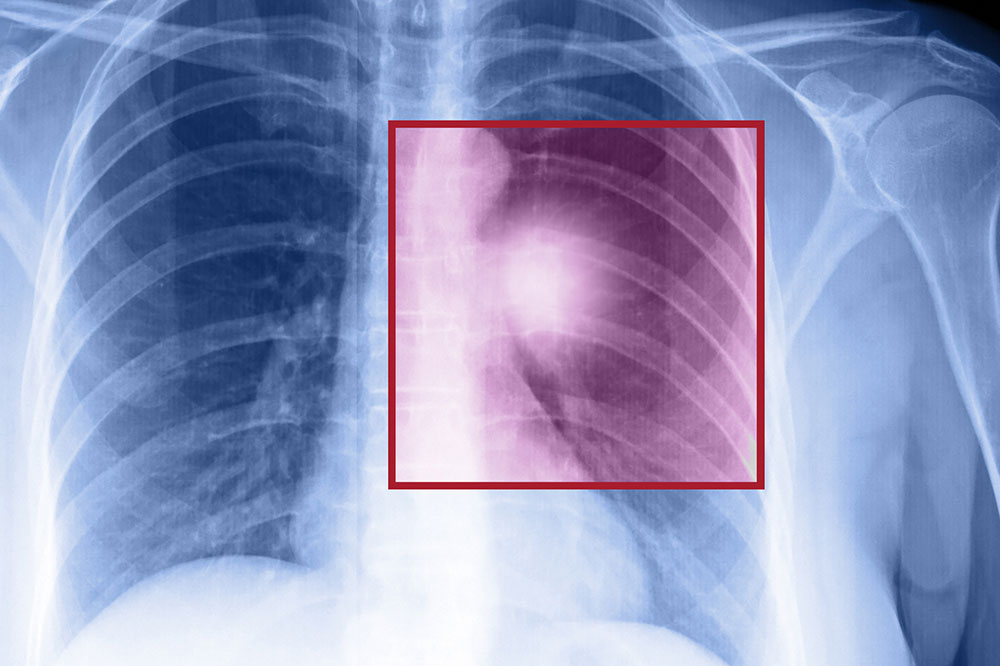Comprehensive Guide to 6 Major Risk Factors for Non-Hodgkin Lymphoma
This comprehensive article explores the six major risk factors linked to non-Hodgkin lymphoma, including demographic, genetic, environmental, and immune-related influences. Understanding these factors is essential for early detection, prevention, and personalized treatment strategies. The guide highlights how age, gender, health conditions, genetic predispositions, environmental exposures, and immune suppression contribute to the disease, offering valuable insights for patients, caregivers, and healthcare providers aiming to improve outcomes through awareness and timely intervention.

Understanding the Six Key Risk Factors of Non-Hodgkin Lymphoma
Non-Hodgkin lymphoma (NHL) is a complex type of cancer that originates in the lymphatic system. While it can affect anyone regardless of age or background, various risk factors significantly increase the likelihood of developing this disease. Recognizing these risk factors not only aids in early detection but also informs preventive measures and tailored treatment options. In this comprehensive guide, we explore the six primary risk factors associated with non-Hodgkin lymphoma, providing in-depth insights into how each contributes to disease development.
Demographic Factors and Their Role in NHL Susceptibility
Age: One of the most significant demographic risk factors for non-Hodgkin lymphoma is age. The incidence of NHL increases markedly with age, particularly among individuals over 60 years old. Older adults experience a higher prevalence due to the natural decline in immune function, accumulation of genetic mutations over time, and prolonged exposure to environmental risks. While younger populations can develop NHL, the likelihood escalates in later decades of life, making age a critical consideration in screening and diagnosis.
Gender: Statistical data consistently show that males are more susceptible to non-Hodgkin lymphoma than females. The reasons behind this gender disparity are not entirely understood but may involve hormonal influences, differences in immune system functioning, or occupational exposures. Recognizing gender-related risks can improve targeted screening strategies, especially in high-risk groups.
Race and Ethnicity: Caucasians tend to have higher incidence rates of NHL compared to African American populations. Racial disparities may stem from genetic predispositions, socioeconomic factors, environmental exposures, or variations in healthcare access. Understanding these differences supports culturally sensitive awareness campaigns and tailored medical interventions.
Pre-existing Health Conditions and Their Impact
Autoimmune diseases and chronic infections are well-documented risk factors contributing to the development of non-Hodgkin lymphoma. These conditions compromise the immune system, leading to abnormal cellular proliferation.
Autoimmune Diseases: Conditions such as rheumatoid arthritis, systemic lupus erythematosus, and celiac disease involve persistent immune system activation. This chronic immune stimulation increases the likelihood of malignant transformations in lymphoid tissues.
Infections: HIV/AIDS significantly elevates NHL risk due to immune suppression. Other infections like Helicobacter pylori (linked to gastric cancer), Epstein-Barr virus (EBV), and hepatitis C virus have also been implicated in lymphomagenesis, often acting as oncogenic triggers or co-factors.
Early diagnosis and management of these underlying conditions can be crucial for reducing lymphoma risk and improving outcomes.
Genetic and Hereditary Factors
Genetics play a pivotal role in a person’s susceptibility to non-Hodgkin lymphoma. Although NHL is not directly inherited, inherited immune system disorders and genetic mutations can predispose individuals to this disease.
Inherited Immune System Disorders: Genetic conditions such as hypogammaglobulinemia, Wiskott-Aldrich syndrome, and ataxia-telangiectasia impair immune defenses and increase the risk of lymphoid malignancies.
Family History: Having close relatives with lymphoma or other blood cancers may indicate a hereditary component, emphasizing the importance of genetic counseling and vigilant screening in affected families.
Advances in genetic research continue to uncover specific gene mutations linked to NHL, opening new avenues for personalized medicine.
Environmental Exposures and Lifestyle Factors
Environmental exposures, particularly to certain chemicals and substances, significantly influence the risk of developing non-Hodgkin lymphoma. Occupational and lifestyle factors often determine the level of exposure to carcinogens.
Chemicals and Pesticides: Contact with chemicals such as benzene, commonly found in petroleum products, and pesticides used in agriculture has been associated with increased NHL risk. These substances can cause genetic mutations in lymphoid cells, promoting malignancy.
Medications: Certain drugs, including some immunosuppressants used after organ transplants, may elevate lymphoma risk. Long-term use or high dosages appear to be contributing factors.
Radiation Exposure: Exposure to high levels of ionizing radiation, such as from atomic bomb survivors or nuclear accidents, has been linked to elevated lymphoma incidence. Medical radiation exposures, like repeated X-rays or CT scans, are generally low risk but warrant consideration.
Limiting exposure to known carcinogens and adopting protective measures in occupational settings are essential strategies for risk reduction.
Immune System Suppression and Its Effect on NHL Development
A compromised immune system significantly raises the risk of developing non-Hodgkin lymphoma. Several factors can weaken immune defenses, making the body less effective at detecting and destroying abnormal cells.
Organ Transplants: Patients who undergo organ transplantation typically take immunosuppressive medications to prevent rejection. This suppressed immune state increases vulnerability to lymphoid cancers.
HIV/AIDS: HIV impairs the immune system’s ability to fight infections, and the persistent immune activation linked to HIV infection is a known risk factor for NHL.
Genetic Syndromes: Conditions such as Wiskott-Aldrich syndrome and ataxia-telangiectasia involve inherited immune deficiencies that predispose individuals to lymphoid malignancies.
Maintaining a healthy immune system through proper medical care and lifestyle choices, along with monitoring at-risk populations, remains vital for preventing NHL.
The Importance of Early Detection and Prevention
Understanding and monitoring these risk factors are crucial steps in early detection and prevention of non-Hodgkin lymphoma. Healthcare providers can develop targeted screening programs for high-risk groups, facilitating earlier diagnosis and improving treatment outcomes.
Patients should be aware of symptoms such as unexplained weight loss, persistent fatigue, swollen lymph nodes, or fever, which warrant prompt medical evaluation. Lifestyle modifications, regular health check-ups, and avoiding known carcinogens can further reduce individual risk.
Ongoing research into genetic markers and environmental factors continues to enhance our understanding of NHL, ultimately leading to more effective prevention strategies and personalized therapies.
In conclusion, recognizing the multifaceted risk factors associated with non-Hodgkin lymphoma empowers individuals and healthcare professionals to take proactive steps toward early detection, better management, and improved prognosis.





